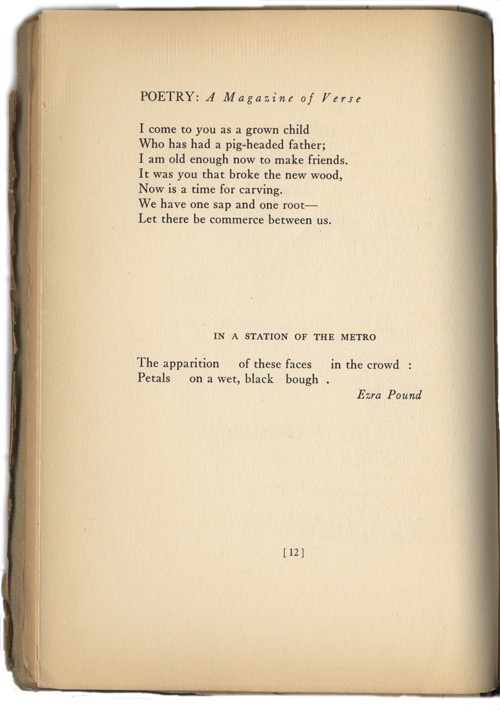Imaginism is a poetry movement that emerged in the early 20th century in Britain and America. It began around 1912, centered in London, and considered the ‘image’ perceived through the senses as the essence of poetry. The movement aimed to capture ‘sensation of the moment’ in direct and clear language, eliminating rhetorical or decorative language and excessive emotion.
Imaginism was an artistic response to the rapidly changing era of industrialization. Young poets, believing that traditional Victorian poetry centered on rhythm and lyricism failed to reflect reality, sought a new order of language. They believed the world could be expressed through the ‘momentary image’ of objects rather than emotions.
The main figures of the movement included Ezra Pound, H.D. (Hilda Doolittle), Richard Aldington, and Amy Lowell. In particular, Pound published the three principles of Imaginism in the 1913 magazine ‘Poetry.’
The first principle is ‘to treat the object directly.’
The second is ‘to use no unnecessary word.’
The third is ‘to substitute musical rhythm with the natural flow of spoken language.’
These three principles fundamentally shook the conventions of poetry at that time.
One frequently cited representative work of Imaginism is Ezra Pound’s poem ‘In a Station of the Metro,’ which consists of just two lines. It reads, “The apparition of these faces in the crowd; / Petals on a wet, black bough.”

This work, which represents the human multitude through a single visual image, is praised as an example of maximizing sensation with a minimum of language.
Imaginism had a significant impact on the literary scene until the mid-1910s. While poets in England were bound by classical metaphors and rhythms, Imaginists thoroughly rejected them. They saw poetry not as a ‘means of conveying ideas’ but as a ‘sculpture of sensations.’ For them, poetry was an array of sensations, and language was the tool.
The movement was short-lived. Around 1917, Pound left the movement due to differences of opinion with Lowell, after which Imaginism was absorbed into the free verse movement and modernist poetry. However, its influence was deep. Poets like T.S. Eliot, William Carlos Williams, and later the Beat generation all inherited the language view of Imaginism.
Imaginism influenced not only poetry but other art forms like painting, music, and film. In painting, Picasso and Braque’s Cubism presented objects’ essences as ‘visual fragments,’ and in film, Eisenstein’s montage theory emphasized the ‘clash of images.’ Each medium placed the ‘instant image’ at its center in its unique way.
Subsequently, Imaginism is compared with structuralism, symbolism, and expressionism and is evaluated as the starting point of modern art. While symbolism tried to translate inner emotions and mysteries into language, Imaginism captured the earlier stage of ‘sensation.’ Expressionism revealed subjectivity through the eruption of emotion, but Imaginism showed objective moments with restrained language.
Ezra Pound referred to Imaginism as ‘pieces of language.’ He argued that poetry should be composition, not explanation, and that words should serve the roles of rhythm, color, and line. His concept was an attempt to introduce the principles of musical rhythm and compositional principles of painting into poetry. This expanded poetry into a comprehensive art form combining auditory and visual elements.
Imaginism established the basic structure of modern poetry as ‘short and clear poems.’ It was influenced by the brevity of Japanese haiku and tanka, enabling compact expressions in English poetry. The method of conveying emotions through the image of objects instead of stating emotions became the foundation of poetic grammar worldwide.
Today, Imaginism is not just considered a literary movement but an ‘aesthetic experiment of language.’ Image-centric expression has permeated modern visual culture, including photography, advertising, and digital content. Thus, Imaginism can be said to be a cornerstone of modern art in terms of the ‘sensitization of language.’
Beyond literature, Imaginism reinvented the language of art that thinks through sensations and feels visually. The ‘order of sensation’ beyond the logic of language is the essence of Imaginism.